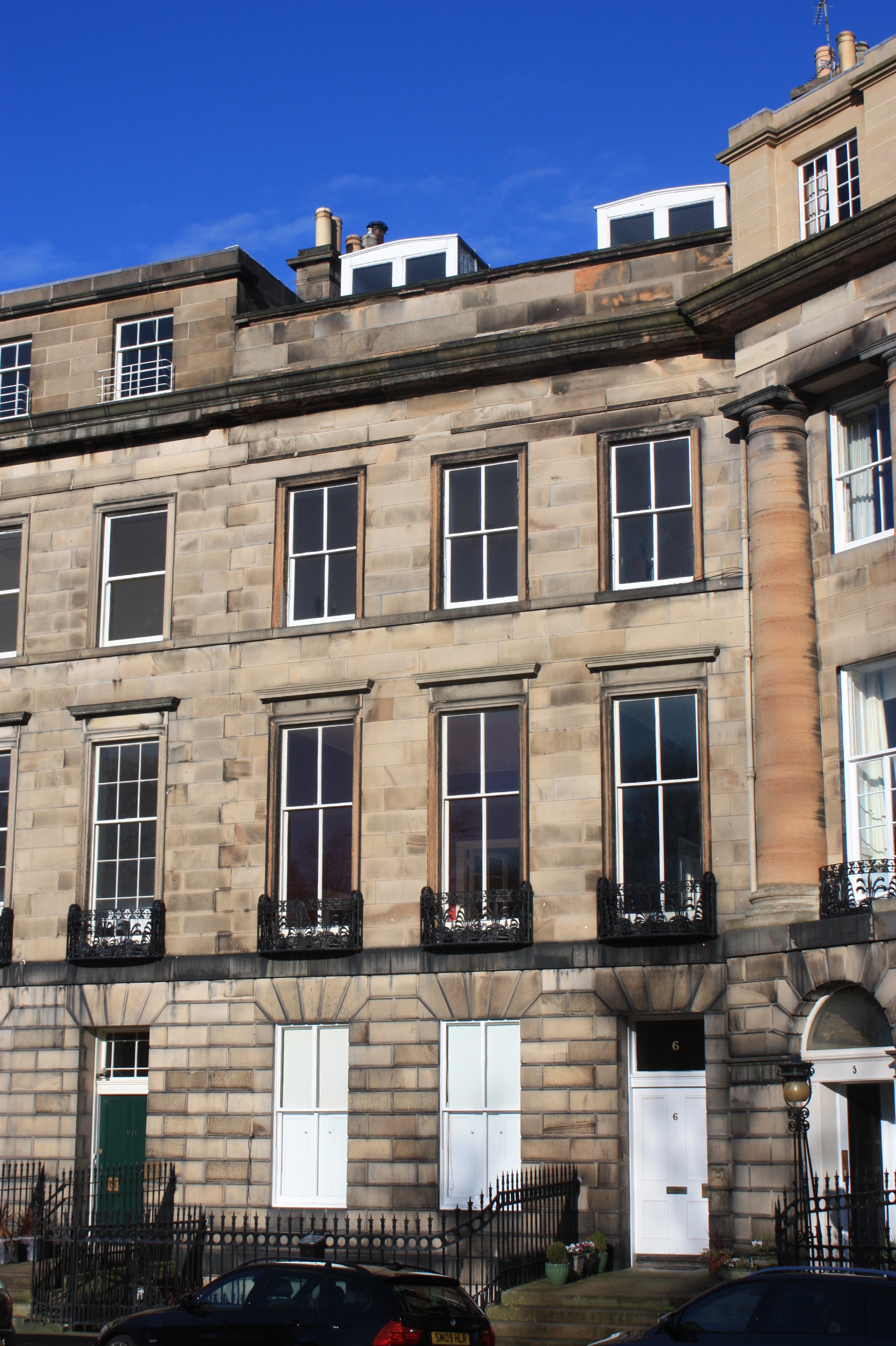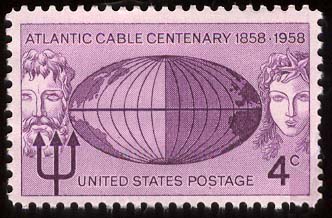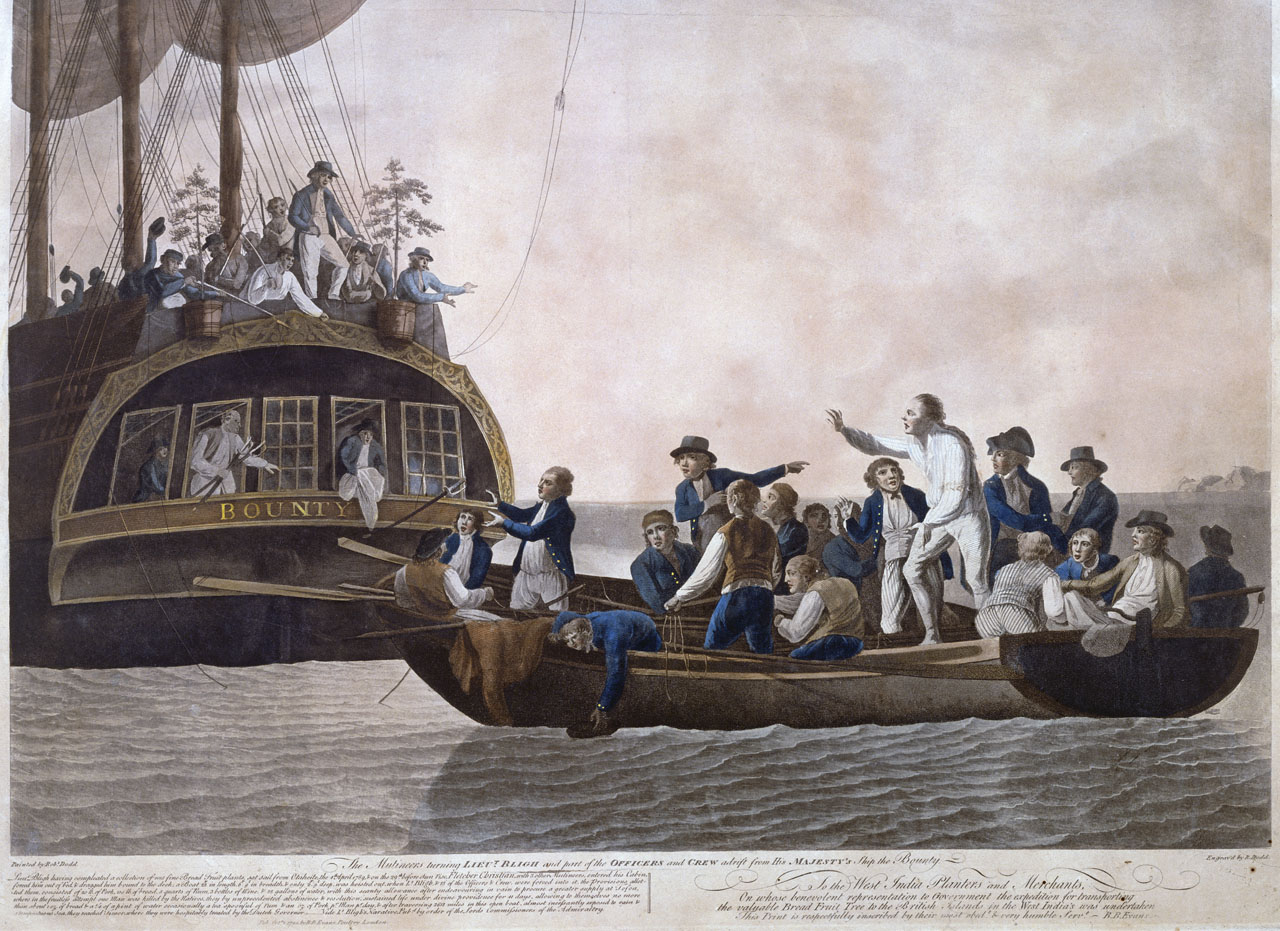|
John Learmonth
John Learmonth of Dean, DL FRSE (26 May 1789 – 17 December 1858) was Lord Provost of Edinburgh from 1831 to 1833. He was co-funder of the Dean Bridge project in western Edinburgh and gives his name to many of the streets in Comely Bank, the district to the north-west of the bridge. He was a Tory politician and also chairman of the Edinburgh and Glasgow Railway Company. Life He was descended from James Learmonth, Lord Balcomie. He was born on 26 May 1789 the son of John Learmonth or Learmont, an Edinburgh coach-builder based at 4 Princes Street on the site presently occupied by the Balmoral Hotel, and was a man of independent means before becoming a property speculator and politician, becoming a city Bailie in 1830. His mother was Grace Young (died 1848). His sister Margaret married Sir John Sinclair of Dunbeath. In 1827 (following the death of Sir John Nisbett of Dean) he purchased the Dean estate to the west of the city. At this time he was living at 38 Charlotte Square ... [...More Info...] [...Related Items...] OR: [Wikipedia] [Google] [Baidu] |
Edinburgh
Edinburgh ( ; gd, Dùn Èideann ) is the capital city of Scotland and one of its 32 Council areas of Scotland, council areas. Historically part of the county of Midlothian (interchangeably Edinburghshire before 1921), it is located in Lothian on the southern shore of the Firth of Forth. Edinburgh is Scotland's List of towns and cities in Scotland by population, second-most populous city, after Glasgow, and the List of cities in the United Kingdom, seventh-most populous city in the United Kingdom. Recognised as the capital of Scotland since at least the 15th century, Edinburgh is the seat of the Scottish Government, the Scottish Parliament and the Courts of Scotland, highest courts in Scotland. The city's Holyrood Palace, Palace of Holyroodhouse is the official residence of the Monarchy of the United Kingdom, British monarchy in Scotland. The city has long been a centre of education, particularly in the fields of medicine, Scots law, Scottish law, literature, philosophy, the sc ... [...More Info...] [...Related Items...] OR: [Wikipedia] [Google] [Baidu] |
Thomas Telford
Thomas Telford FRS, FRSE, (9 August 1757 – 2 September 1834) was a Scottish civil engineer. After establishing himself as an engineer of road and canal projects in Shropshire, he designed numerous infrastructure projects in his native Scotland, as well as harbours and tunnels. Such was his reputation as a prolific designer of highways and related bridges, he was dubbed ''The Colossus of Roads'' (a pun on the Colossus of Rhodes), and, reflecting his command of all types of civil engineering in the early 19th century, he was elected as the first President of the Institution of Civil Engineers, a post he held for 14 years until his death. The town of Telford in Shropshire was named after him. Early career Telford was born on 9 August 1757, at Glendinning, a hill farm east of Eskdalemuir Kirk, in the rural parish of Westerkirk, in Eskdale, Dumfriesshire. His father John Telford, a shepherd, died soon after Thomas was born. Thomas was raised in poverty by his mother Janet Jac ... [...More Info...] [...Related Items...] OR: [Wikipedia] [Google] [Baidu] |
Scottish Landowners
Scottish usually refers to something of, from, or related to Scotland, including: *Scottish Gaelic, a Celtic Goidelic language of the Indo-European language family native to Scotland *Scottish English *Scottish national identity, the Scottish identity and common culture *Scottish people, a nation and ethnic group native to Scotland *Scots language, a West Germanic language spoken in lowland Scotland *Symphony No. 3 (Mendelssohn), a symphony by Felix Mendelssohn known as ''the Scottish'' See also *Scotch (other) *Scotland (other) *Scots (other) *Scottian (other) *Schottische The schottische is a partnered country dance that apparently originated in Bohemia. It was popular in Victorian era ballrooms as a part of the Bohemian folk-dance craze and left its traces in folk music of countries such as Argentina ("chotis"Span ... * {{disambiguation Language and nationality disambiguation pages ca:Escocès ... [...More Info...] [...Related Items...] OR: [Wikipedia] [Google] [Baidu] |
Lord Provosts Of Edinburgh
Lord is an appellation for a person or deity who has authority, control, or power over others, acting as a master, chief, or ruler. The appellation can also denote certain persons who hold a title of the peerage in the United Kingdom, or are entitled to courtesy titles. The collective "Lords" can refer to a group or body of peers. Etymology According to the Oxford Dictionary of English, the etymology of the word can be traced back to the Old English word ''hlāford'' which originated from ''hlāfweard'' meaning "loaf-ward" or "bread-keeper", reflecting the Germanic tribal custom of a chieftain providing food for his followers. The appellation "lord" is primarily applied to men, while for women the appellation " lady" is used. This is no longer universal: the Lord of Mann, a title previously held by the Queen of the United Kingdom, and female Lords Mayor are examples of women who are styled as "Lord". Historical usage Feudalism Under the feudal system, "lord" had a ... [...More Info...] [...Related Items...] OR: [Wikipedia] [Google] [Baidu] |
1858 Deaths
Events January–March * January – ** Benito Juárez (1806–1872) becomes Liberal President of Mexico. At the same time, conservatives install Félix María Zuloaga (1813–1898) as president. ** William I of Prussia becomes regent for his brother, Frederick William IV, who had suffered a stroke. * January 9 ** British forces finally defeat Rajab Ali Khan of Chittagong ** Anson Jones, the last president of the Republic of Texas, commits suicide. * January 14 – Orsini affair: Felice Orsini and his accomplices fail to assassinate Napoleon III in Paris, but their bombs kill eight and wound 142 people. Because of the involvement of French émigrés living in Britain, there is a brief anti-British feeling in France, but the emperor refuses to support it. * January 25 – The '' Wedding March'' by Felix Mendelssohn becomes a popular wedding recessional, after it is played on this day at the marriage of Queen Victoria's daughter Victoria, Princess Roy ... [...More Info...] [...Related Items...] OR: [Wikipedia] [Google] [Baidu] |
1789 Births
Events January–March * January – Emmanuel Joseph Sieyès publishes the pamphlet ''What Is the Third Estate?'' ('), influential on the French Revolution. * January 7 – The 1788-89 United States presidential election and 1789 United States House of Representatives elections, House of Representatives elections are held. * January 9 – Treaty of Fort Harmar: The terms of the Treaty of Fort Stanwix (1784) and the Treaty of Fort McIntosh, between the United States Government and certain native American tribes, are reaffirmed, with some minor changes. * January 21 – The first American novel, ''The Power of Sympathy or the Triumph of Nature Founded in Truth'', is printed in Boston, Massachusetts. The anonymous author is William Hill Brown. * January 23 – Georgetown University is founded in Georgetown (Washington, D.C.), Georgetown, Maryland (today part of Washington, D.C.), as the first Catholic Church, Roman Catholic college in the United Stat ... [...More Info...] [...Related Items...] OR: [Wikipedia] [Google] [Baidu] |
John Chesser (architect)
John Chesser (1819-1892) was a nineteenth-century Scottish architect largely based in Edinburgh. He was described as "the prime exponent of terrace design at the time". A very high number of his works are now category A listed buildings, evidencing the quality of his work, particularly in the West End of Edinburgh. Life He was born on 18 September 1819 on the Dalmeny House estate, a few miles west of Edinburgh, his elderly father, William Chesser (1757-1849), being Clerk of Works there. After spending some years working on the Revesby House estate in Lincolnshire he returned to Dalmeny to fill his father’s shoes on his death. By 1852 he appears to have been working for the City Architect, David Cousin. Through his experience, in 1858, he then gained a post as Superintendent of Works at George Heriot’s School following the death of Alexander Black. This role included developing the huge swathes of land around the city owned by the Heriot Trust, particularly in the West ... [...More Info...] [...Related Items...] OR: [Wikipedia] [Google] [Baidu] |
Alexander Learmonth (MP)
Lt. Col. Alexander Learmonth (1829 - 10 March 1887) was a British Army officer and a Conservative Party politician. Life Born at 4 Princes Street in Edinburgh, the eldest son of John Learmonth, Alexander Learmonth was educated at University College, Oxford, where he matriculated in 1847 before entering the Inner Temple to study law. He joined the Army and became a Colonel in the 17th Lancers. On retiring from the Army he was elected Conservative MP for Colchester on 3 November 1877, sitting from 1870 to 1880. In 1859, he married Charlotte Lyons, the eldest daughter of Lieutenant-General Humphrey Lyons. The couple had 7 children. By 1878, his extravagant London lifestyle caused his bankruptcy and the lands he had inherited in Edinburgh Edinburgh ( ; gd, Dùn Èideann ) is the capital city of Scotland and one of its 32 Council areas of Scotland, council areas. Historically part of the county of Midlothian (interchangeably Edinburghshire before 1921), it is located in Lot ... [...More Info...] [...Related Items...] OR: [Wikipedia] [Google] [Baidu] |
Dublin
Dublin (; , or ) is the capital and largest city of Ireland. On a bay at the mouth of the River Liffey, it is in the province of Leinster, bordered on the south by the Dublin Mountains, a part of the Wicklow Mountains range. At the 2016 census it had a population of 1,173,179, while the preliminary results of the 2022 census recorded that County Dublin as a whole had a population of 1,450,701, and that the population of the Greater Dublin Area was over 2 million, or roughly 40% of the Republic of Ireland's total population. A settlement was established in the area by the Gaels during or before the 7th century, followed by the Vikings. As the Kingdom of Dublin grew, it became Ireland's principal settlement by the 12th century Anglo-Norman invasion of Ireland. The city expanded rapidly from the 17th century and was briefly the second largest in the British Empire and sixth largest in Western Europe after the Acts of Union in 1800. Following independence in 1922, ... [...More Info...] [...Related Items...] OR: [Wikipedia] [Google] [Baidu] |
Greyfriars Kirkyard
Greyfriars Kirkyard is the graveyard surrounding Greyfriars Kirk in Edinburgh, Scotland. It is located at the southern edge of the Old Town, adjacent to George Heriot's School. Burials have been taking place since the late 16th century, and a number of notable Edinburgh residents are interred at Greyfriars. The Kirkyard is operated by City of Edinburgh Council in liaison with a charitable trust, which is linked to but separate from the church. The Kirkyard and its monuments are protected as a category A listed building. History Greyfriars takes its name from the Franciscan friary on the site (the friars of which wear grey habits), which was dissolved in 1560. The churchyard was founded in August 1562 after Royal sanction was granted to replace the churchyard at St Giles' Cathedral in Edinburgh. The latter burial ground was not used after around 1600. The Kirkyard was involved in the history of the Covenanters. The Covenanting movement began with signing of the National Cov ... [...More Info...] [...Related Items...] OR: [Wikipedia] [Google] [Baidu] |
Heriot Trust
George Heriot's School is a Scottish independent primary and secondary day school on Lauriston Place in the Old Town of Edinburgh, Scotland. In the early 21st century, it has more than 1600 pupils, 155 teaching staff, and 80 non-teaching staff. It was established in 1628 as George Heriot's Hospital, by bequest of the royal goldsmith George Heriot, and opened in 1659. It is governed by George Heriot's Trust, a Scottish charity. Architecture The main building of the school is notable for its renaissance architecture, the work of William Wallace, until his death in 1631. He was succeeded as master mason by William Aytoun, who was succeeded in turn by John Mylne. In 1676, Sir William Bruce drew up plans for the completion of Heriot's Hospital. His design, for the central tower of the north façade, was eventually executed in 1693. The school is a turreted building surrounding a large quadrangle, and built out of sandstone. The foundation stone is inscribed with the date 1628. Th ... [...More Info...] [...Related Items...] OR: [Wikipedia] [Google] [Baidu] |
John Tait (architect)
John Tait (1787-1856) was a Scottish architect operating in the first half of the 19th century responsible for several fine streets in Edinburgh all of which are listed buildings. One of his creations, 15 Rutland Square, houses the Royal Incorporation of Architects in Scotland. Life He is believed to have been born in Edinburgh in 1787. His early years are unclear but he is thought to have apprenticed as an architect under Archibald Elliot as several of his works conclude Elliot's works. He first appears listed in Edinburgh directories as an architect in 1826, living at 1 Mound Place in the Old Town. He worked for the Provost, John Learmonth in feuing the Learmonth area of the city, north of Dean Village, and continued in this role even after John Learmonth was forced to pass the project on to the Heriot Trust. His clever scheme at Clarendon Crescent (named after the Earl of Clarendon) was based on William Henry Playfair's Regent Terrace, and cleverly disguises the west en ... [...More Info...] [...Related Items...] OR: [Wikipedia] [Google] [Baidu] |


.jpg)





